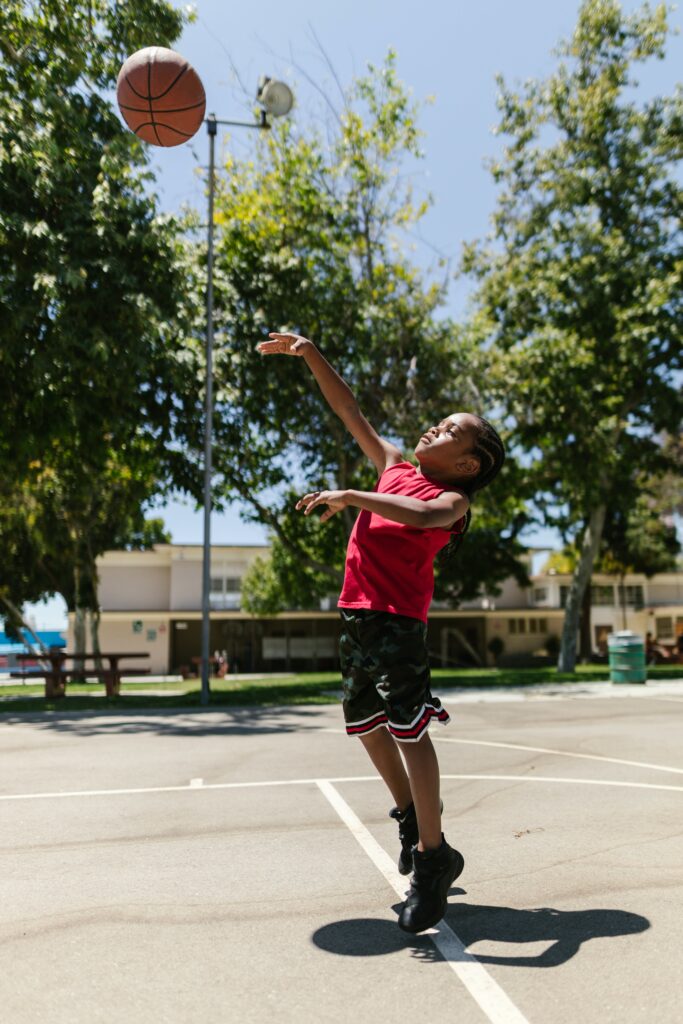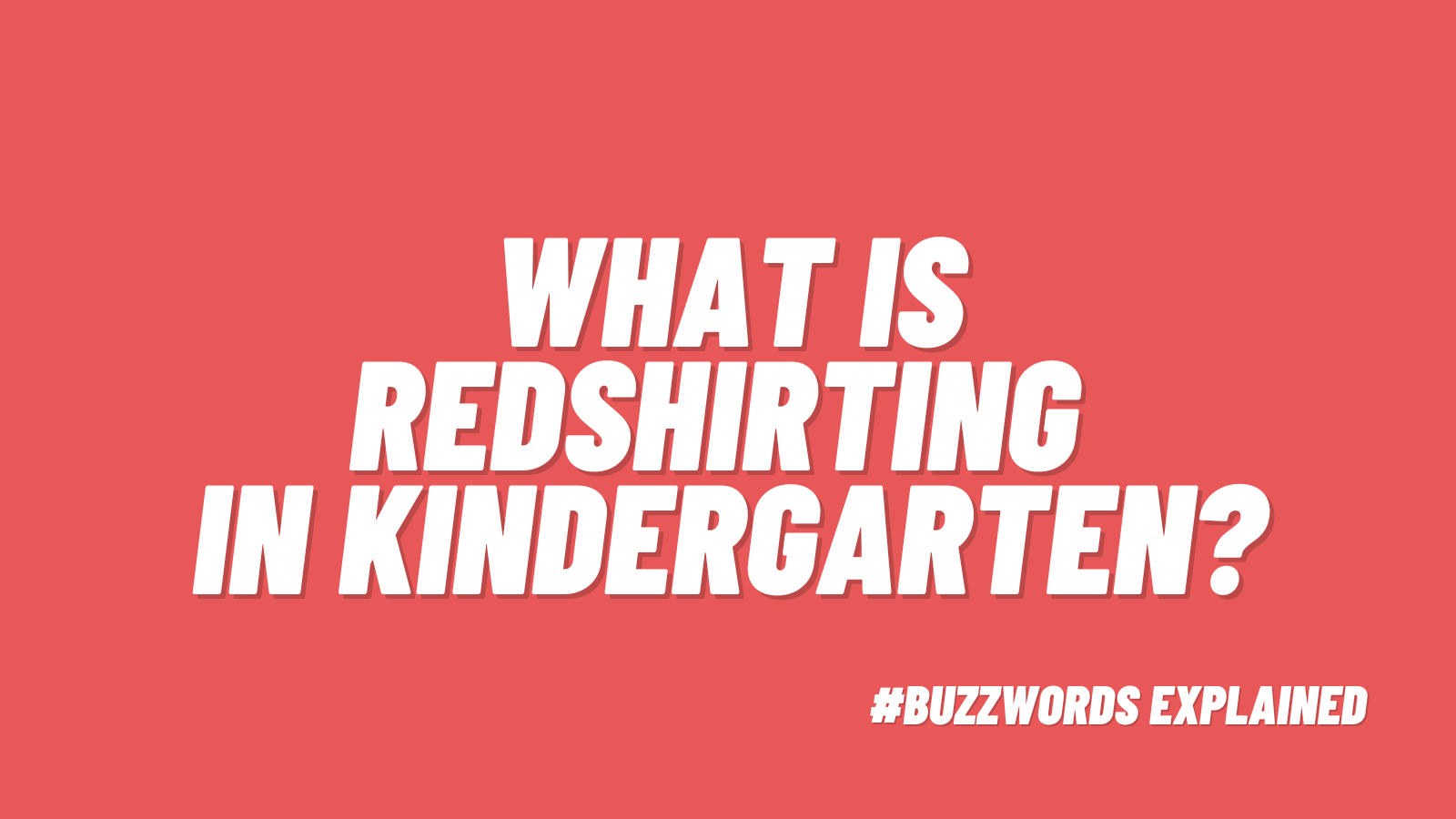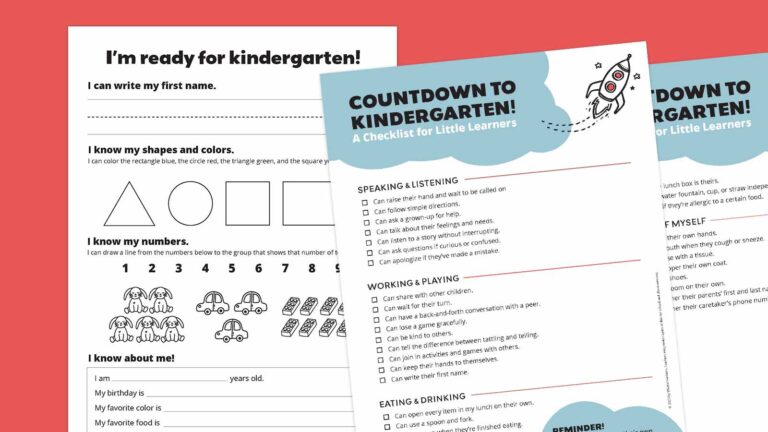It can be a loaded question among parents as their children approach school age: “Will you send them to kindergarten next year or wait?” When considering when a child should start kindergarten, some families simply take their cues from their local school entry age dates. Others choose redshirting. What is redshirting in kindergarten? We took a closer look at research about it and asked our network of teachers about their personal and professional experiences.

What is redshirting in kindergarten?
The term “redshirting” comes from sports, where it means sitting out from playing for a year in hopes of having an advantage later. (Fun fact: The term originated at the University of Nebraska, where a football player who trained with the team wore a red shirt without a number in 1937. He chose to wait a year to play to focus on conditioning and to allow older players to graduate.) Many universities still regularly redshirt players for their freshman year.
What is redshirting when it comes to academics? Parents who redshirt a child delay kindergarten entry until the year after the child is age-eligible. For that extra year, the child might stay at daycare, go to preschool or pre-K, or not attend school. Kids with summer birthdays who turn 5 shortly before the local entry date are the most common candidates for redshirting. However, the teachers we talked to reported seeing a rise in the number of kids with spring birthdays also joining Team Wait.
Why do people choose redshirting for kindergartners?
Academic redshirting got extra attention from the general public when Malcolm Gladwell highlighted it in his 2008 book Outliers: The Story of Success. He discussed research suggesting kids who are older than their classmates have better school and life outcomes. He credited the “cumulative advantage” of all the situations in which relatively older kids were a little more academically ready, a bit physically stronger or more able to focus, or just perceived by teachers as more capable—simply because they’d had more time in life to mature.
Many parents cite extra time to grow emotionally as their motivator for redshirting their children. Our teacher network chimed in with related reasons, like another year for kids to build stamina for engaging in a full day of learning or bolster their social skills. They also echoed Malcolm Gladwell’s theory that being older in one’s grade is better than being younger. The top comment we received was about the impact on kids’ lives later: Delaying kindergarten can be, essentially, an extra year for a kid to be a kid.
Redshirting isn’t a universally available choice. The top characteristic of those who redshirt their child in kindergarten is that they had the financial and practical option to do so. Information shared by the Stanford Center for Education Policy Analysis estimated around 5% of students in the United States delay kindergarten entry, a number that jumped temporarily during the pandemic. Male, white, and more affluent children are more likely to be redshirted, and redshirting is more prevalent at schools that serve larger percentages of white, affluent students. There can be a redshirting culture in a school community; in some private schools, in particular, redshirting spring- and summer-birthday kids has evolved to be the expected norm.
What research says about redshirting in kindergarten
Researching the benefits of redshirting is complicated, since delaying kindergarten entry is a choice families make, presumably influenced by their child’s individual characteristics. Some research shows bumps in academic test scores for redshirted kindergartners. This is most noticeable at kindergarten entry (which makes sense, since children are a year older) and in early elementary school.
Some research also supports the mental health benefits of delaying school entry; entering school at an older age was associated with better attention and less hyperactivity, which have been linked to school success. The benefits seemed to persist even up to age 11.
There’s clear-cut research showing that redshirting can backfire for children with disabilities though, whether they’re identified before kindergarten or later on. Starting kindergarten can give kids important access to free evaluation and intervention services, and earlier intervention is optimal.

Kindergarten redshirting pros
The majority of teachers and parents we spoke with felt positively about the choice to redshirt kids, even years later. Overall, they valued the “gift of time” redshirting affords. They appreciated that redshirted kids were chronologically older when entering college and adult life.
Some research suggests that redshirting in kindergarten can reduce the likelihood a child will be retained in a later grade. Research about the impacts of retention is unclear in the early grades and more convincingly negative as students get older. For older students, retention has been correlated with higher drop-out rates.
Kindergarten redshirting cons
Some redshirting families said it can be hard once puberty hits if kids develop physically before their peers. Plus, parents didn’t like their kids being able to drive before their classmates are able to.
Widespread redshirting can complicate demands on teachers and classrooms too. Some preschool teachers report behavior challenges for redshirted kids who feel bored with preschool programming. Teaching a class of kids at any grade whose ages span more than a year means that teachers have to be even more skilled at differentiating to meet various needs.
How to decide about kindergarten redshirting

There’s no crystal ball to predict how redshirting will impact a specific child. It’s a decision families must make with the individual child in mind. (Several teachers who shared their thoughts with us said that within their own families, redshirting was the best choice for one child and not another.) That said, these guiding questions can help families think through their decisions.
Is redshirting a financial and logistical option?
Circumstance might make the decision for you. Childcare is expensive. A spot in a high-quality preschool or daycare may not be available, especially for an older child. If redshirting isn’t a choice, rest assured that public schools are obligated to meet age-eligible children where they are developmentally.
How well does the child self-regulate?
Self-regulation skills allow people to manage their own emotions, attention, and behavior across different circumstances. There’s ample research linking better self-regulation to better school and life outcomes. Taking an honest look at how well a child tackles independent and group challenges, advocates for their own needs, and copes with different emotions can be extremely helpful when considering whether or not to delay kindergarten entry. (To learn more about self-regulation, check out What Is Emotional Regulation?)
Might the child need special services?
If going to kindergarten means that a child could receive evaluation and services like speech or occupational therapy that otherwise wouldn’t be available, that should weigh heavily on a family’s decision. Research clearly indicates that an extra year to mature won’t pack the same benefits as access to earlier intervention.
What do experts who actually know the child think?
Public school staff cannot legally recommend redshirting an eligible child. They can, however, share any data they collect at a kindergarten screening session about how a child stacks up to kindergarten entry expectations. A child’s pediatrician can also give knowledgeable advice based on a child’s developmental indicators. If the child has preschool or daycare teachers, asking them to weigh in is critical. They’ve seen the child move through different parts of a school day, interact with other kids, and deal with tough emotions.
Can you imagine the child being happy and successful in kindergarten?
The teachers and parents we polled were adamant: Pay attention to gut feelings. Visiting a potential kindergarten class can be eye-opening. (Just remember that end-of-the-year kindergarten students have had all year to learn how to be at school!) Going to a school orientation program, looking at a typical kindergarten school day schedule, and talking to families with kindergarten experience in the school can all give parents a sense of what kindergarten would demand from their child.
Families must keep in mind that kids change—sometimes very quickly. Teacher and behavior interventionist Kate P. said, “How can a parent predict how a child will develop years down the road? My son is a spring birthday. For the first few months after his fifth birthday, I couldn’t imagine him being ready for kindergarten. Then he was, in fact, ready.”
Thinking about a child heading to kindergarten soon? Don’t miss our Kindergarten Readiness Checklist!
Want to know when we post more articles like this? Sign up for our newsletters.


